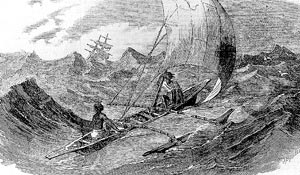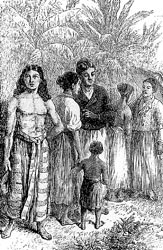
More descriptive, more personalMaria Graham: The first female author to write on Ceylon in English During the 19th century there were three female authors of distinction who provided accounts of Ceylon in the English language – Maria Graham (1812), Constance Gordon-Cumming (1892), and Marianne North (1892). In addition, all of them were accomplished artists, especially North who had her own gallery at the Royal Botanic Gardens at Kew. That there were so few female 19th-century accounts of the island is not altogether surprising given the general paucity of female travellers and, to a lesser extent, female authors, during that period. The works of these female authors differ from those of their male counterparts – Bennett (1843), Cordiner (1807), Davy (1821), Forbes (1840), Knighton (1854), Percival (1803), Pridham (1849), Selkirk (1844), Skinner (1891), Sullivan (1854) and Tennent (1859) for example - in certain respects. The mission of many of the male authors was to promote the island as a commercial proposition for pioneers and investors, or to amass information on the new colony. The works of the female authors, generally being of the memoir type, were more personal and impressionistic, and their descriptions often demonstrate they were more observant than the males.
This subject has been explored by Neloufer de Mel and Minoli Samarakkody in Writing an Inheritance: Women’s Writing in Sri Lanka 1860 – 1948 (2002). They conclude: “this oeuvre of western women’s writing in Sri Lanka provides a fascinating insight not only into the paradigms of Orientalism at work but also of the discursive pressures the western woman writer was under. Her sojourns in the colonies often required a tense, ambivalent and contradictory negotiation of her own positions as vested in the Empire, but as a gendered (and unequal) subject within it. Often she had to adopt the tone and stance of imperial male adventure writing even as she stood outside its masculinity in order to be accepted by the patriarchal establishment.” In this article I shall concentrate on the first of the females, Maria Graham (1786-1844), a writer of travel and children’s books, and a fine illustrator. Born in Scotland as Maria Dundas, her father, George Dundas, was one of many naval officers raised by the Dundas clan. In 1808, his life at sea finished, he was made head of the naval works at the British East India Company’s dockyard in Bombay, and took Maria, then 23, with him. She fell in love with a naval officer, Thomas Graham and they married in India in 1809. In 1811 they returned to England, where Maria Graham published her first book, Journal of a Residence in India, which included her Ceylon visit. This visit fell into three phases: her time in Galle including an excursion to Weligama; the four-day journey to Colombo; and an elephant kraal excursion to Negombo. I shall restrict this article to her Galle experience and excursion, which begins with a thumbnail description of her port-of-call, the venerable yet unsatisfactory anchorage of Galle, and a fastidious representation of the oruwa: “Pointe de Galle, Island of Ceylon, Feb. 16, 1810. – The appearance of the land about this place is beautiful; the hills and valleys, mountains and woods, with the projecting rocks about the roadstead, the old Dutch fort, and the shipping, make a most wonderful landscape. We had scarcely anchored when we were surrounded by a number of little boats, containing vegetables, fruit, and bread. These boats are curiously constructed; a hollow tree forms the bottom, in the shape of a canoe; on each side of this plank is sewed with coier (sic) thread, and the interstices are filled up with dammar;” (hard varnish resins obtained from Asian coniferous trees) “across the boat two poles are fixed, to one end of which, at the distance of twice the breadth of the boat, an outrigger is fastened to balance the boat, and to prevent its upsetting.”
In portraying Galle, Maria reveals that in 1810 a mere handful of English families lived in the fort: “Pointe de Galle is an old Dutch fort, very much out of repair, and not worth making better. It is very neatly kept, and has a cheerful air from the rows of trees planted on each side of the streets. There are not above six English families resident here, but at present a much greater number are collected, as the fleet assembles here for convoy, and to take in spices on the voyage home. I walked to the beach this morning, to see the last of the homeward bound ships; two-and-twenty sail got under way at daybreak, and many an anxious wish went with them.” Maria reveals that a Chinese colony existed near the fort, “brought here by the government as gardeners; for none of the Europeans who have possessed Ceylon have yet been able to raise vegetables in the island; the patience of the Chinese has however succeeded, and I saw not only esculent vegetables of every kind but thriving sugar-caners under their management . . . The dress and air of the Chinese is so exactly what we see on every China cup and dish, that it is needless to describe them.” An excursion was made to “Bellegam” - Weligama - the report of which focuses on the local means of transport and the institution of the rest-house. “None but open carriages are used in Ceylon; we therefore went in bandies (drawn by bullocks and described by Tennent as ‘barbarous two-wheeled waggons’) to the village, where we breakfasted in the rest-house on the seashore. At every station round the island there are rest-houses for travellers under the care of the Modeliar (Mudaliyar), or head-man of the place, in which are tables and chairs, but beds and table-furniture are provided by the travellers.” Rest-house experiences often provide interesting reading, especially those of the 19th century, when services, rudimentary in the extreme – witness the lack of beds - took travellers very much by surprise. But Maria was travelling in an official party, which meant that the rest-houses they encountered were elaborately decorated. Thus she writes of the Weligama rest-house, that evergreen representative of the breed: “The rest-house was decorated with white and coloured calico tied up in roses, and coco-nut leaves split so as to form fringes and festoons; the pillars of the viranda (sic) were covered with palm leaves tied up in bunches, and a gateway at a little distance was dressed in the manner of a triumphal arch (a pandal presumably), with leaves and many-coloured flowers.” “The general appearance of the Cingalese is coarser than that of the natives of Bombay and the adjacent coast, and they wear less clothing in general,” writes Maria. She continues by giving a fine description of the dress of the “the principal native”, the “Maha Modeliar”(Maha Mudaliyar). The costume and regalia of the types of Mudaliyar were splendid, and minute differences in decoration, declaring the rank and status of the wearer were specified in great detail: “Although a Christian, he conforms to the custom of his ancestors in wearing a piece of chintz wrapped around him like a petticoat, but the rest of the dress is in the Portuguese form. His stock and waistcoat of fine white cotton are buttoned rubies; his coat is of fine English broad-cloth, the buttons of embossed silver, and the button-holes embroidered with the same. “Across his shoulders hangs a rich gold lace sword-belt, fastened with a cluster of precious stones; the sword hilt and scabbard are chassed gold, and the eyes and tongues of the lion’s heads on the hilt are of rubies. The Modeliar’s hair is combed tight back from the face, and fastened in a knot behind; a square tortoise-shell comb ornaments the top of the head.” Maria continues by comparing the Mudaliyar’s appearance with that of ordinary people, who, she reveals, “wear their hair dressed in the same manner, excepting that the women deck the knot behind with long pins of gold and silver sets with precious stones. Neither sex wears any clothing above the waist, excepting when they become household servants to Europeans, when they put on a jacket; the clothing of the better sort descends to the heels, the common people are only covered to the knee.” Of the return journey to Galle, Maria remarks: “The road lies along the sea-shore, through cocoa-nut woods, in which there is here and there an opening, where you discover fields and lakes, forests and mountains, melting away in the distance.”She continues by describing the village custom in which important persons were accorded illumination when they travelled at night: “It became dark before we reached home, when suddenly the wood seemed in a blaze; 18 or 20 of the inhabitants of a village, concealed by the brushwood, ran out of their houses with bundles of lighted coconut leaves, and preceded us to the next hamlet, where they were relieved by others.” Finally, as if to announce her presence as the first female author writing on Ceylon in English, Maria pens a short passage on the effect of this illumination, the likes of which would have been beyond her male contemporaries Percival (1803) and Cordiner (1807). “Sometimes the straight tall trunks of the palm-trees whose fan-like heads remained in shadow, seemed to represent a magnificent colonade (sic); sometimes, where the creeping plants had entwined around them, they appeared like some enchanted bower, dressed by fairy hands; while the graceful figures of the torch-bearers, scarcely clothed, recalled to our imagination the triumphs of Bacchus.” |
|| Front
Page | News | Editorial | Columns | Sports | Plus | Financial
Times | International | Mirror | TV
Times | Funday
Times || |
| |
Copyright
2007 Wijeya
Newspapers Ltd.Colombo. Sri Lanka. |

